
Thank you for visiting HOJO website. If you have any enquiry, please feel free to get in touch with us at
▼ Akira Hojo
▼ Hojo Newsletter
▼ HOJO FACEBOOK





HOME>Dark tea>Bu Lang Shan Raw Pu-erh
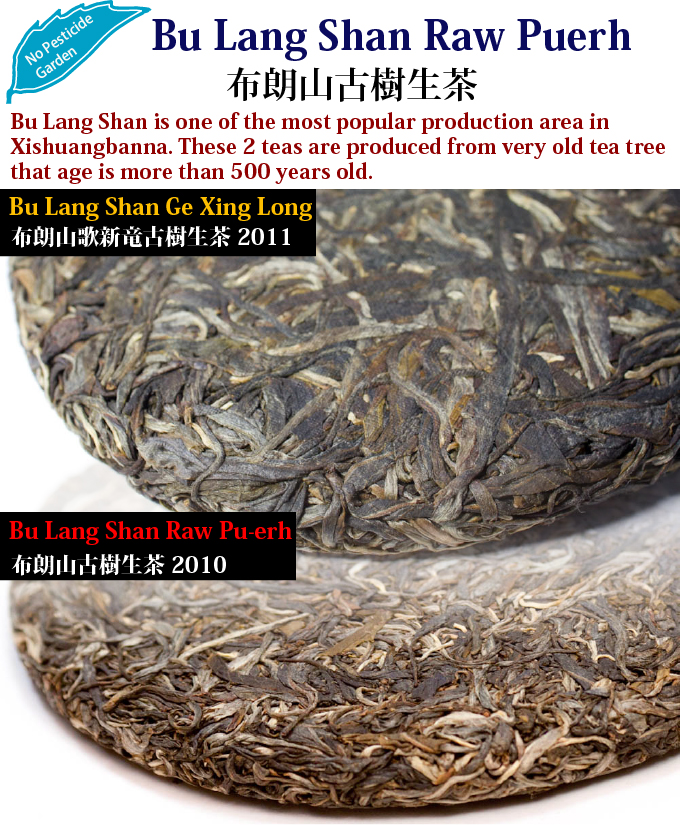
Tea drinker often describes Bu Lang Shan raw puerh as a tea that gives strong taste. One of the reason that Bu Lang Shan raw pu-erh gives strong taste is the age of tea tree is very old. If you casually walk around Bu Lang Shan village, you can easily come across the tea tree that aged about 500-1000 years old. Generally, tea from old tree gives deeper after taste and more complex flavor with longer finishing.
However the age is not the primary factor of the quality. With my experience staying in Bu Lang Shan village, I noticed that farmers don't really know how to grade the tea they produced. As a practice, they classify tea according to the age of tree. The price is set according to the age and it usually has nothing to do with the actual quality. In a way, the age of tea tree is the absolute factor for farmer to set the price of tea. Moreover, I noticed that even amongst teas at the same age, the quality varies a lot. It could be due to the agricultural practice or soil condition. So my practice is I visit the villages every year and select tea on the spot. I do not care about the age of tea tree but to focus on the flavor and after taste. Sometimes I am able to obtain very good quality tea at attractive price.
Bu Lang Shan Ge Xin Long raw puerh gives a complex flavor and strong after taste. The age of the tea tree is about 500 years old. It is the first generation from the wild tea. In terms of taste and flavor, it has a lot of similarities with wild tea. In particular, the minerals in this tea seems very identical. One of the reason is the soil condition of Bu Lang village. They are rich in purple and red clay. In fact the taste of water in this village is very unique. It gives bitter taste at comfortable level.
Bu Lang Shan is situated in Xishuang-banna of South Yunnan. The village is located right next to Myanmar. Bu Lang Shan is one of the first places where human started the cultivation of tea. It generally consists of Bu Lang and Hani races; they deeply involved in tea-making. Their tea-making practice has been unchanged for more than 1000 years.
The oldest tea tree in Xishuang-banna was found in Bu Lang Shan; it is about 800 to 1000 years old.
If you wish to learn about pu-erh tea in detail, please click here >>
Photo Album of Bu Lang Shan
 |
 |
 |
 |
 |
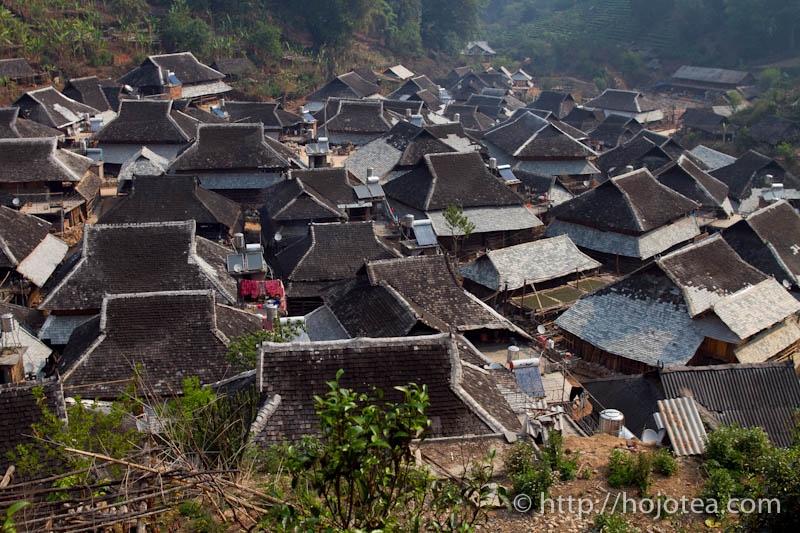 |
 |
 |
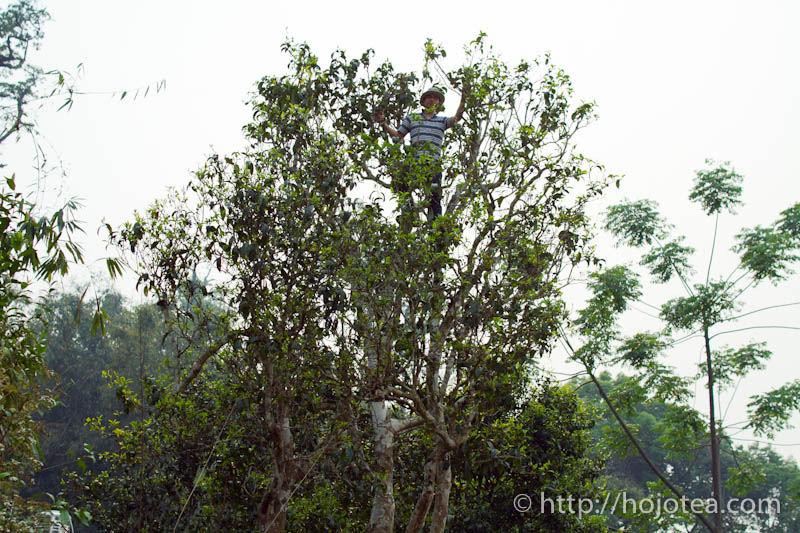 |
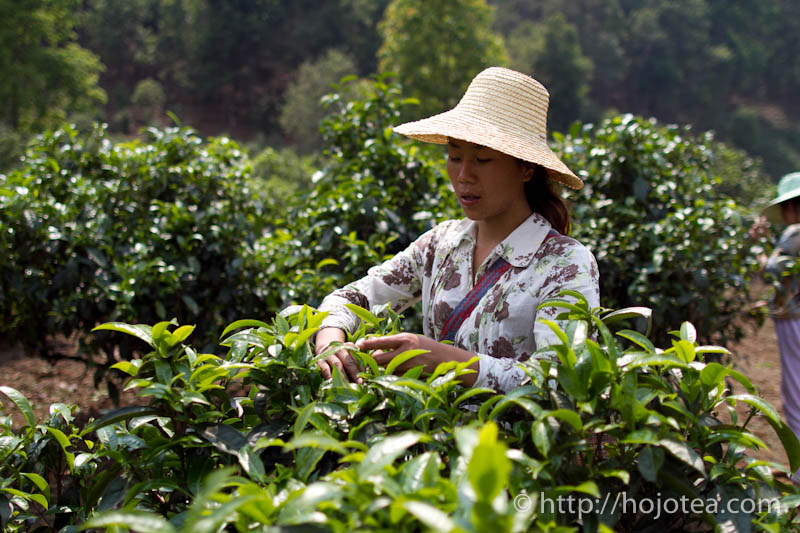 |
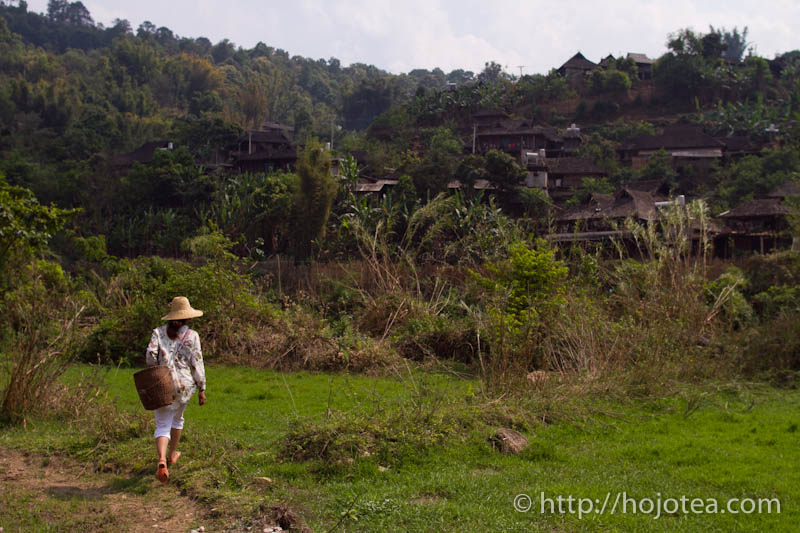 |
 |
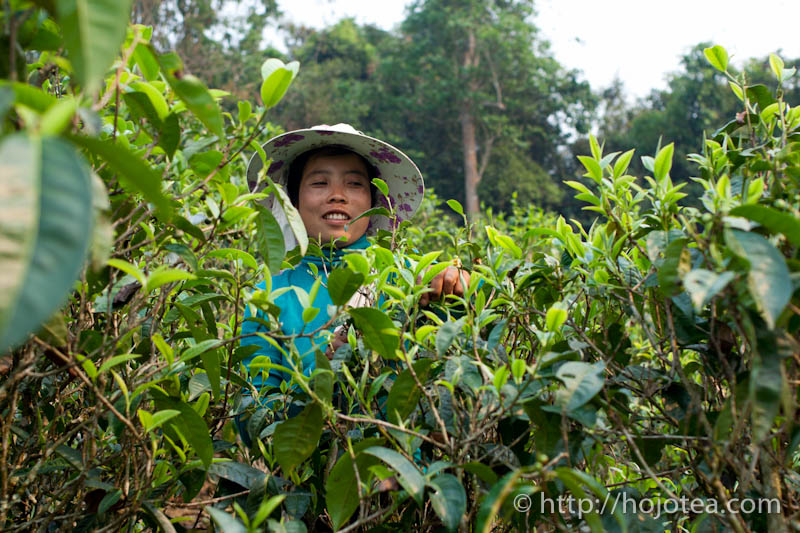 |
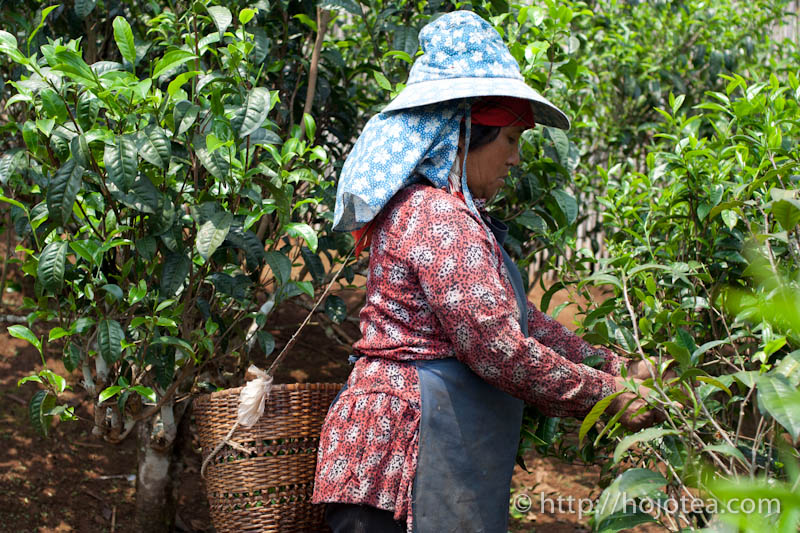 |
 |
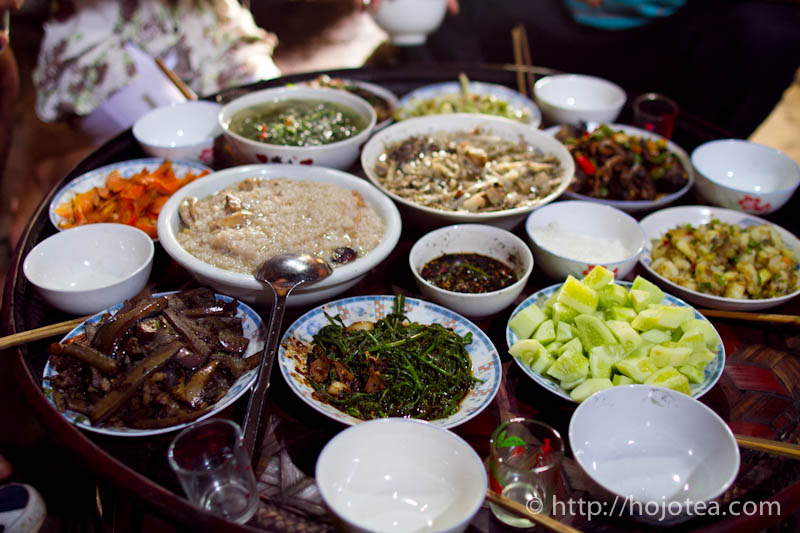 |
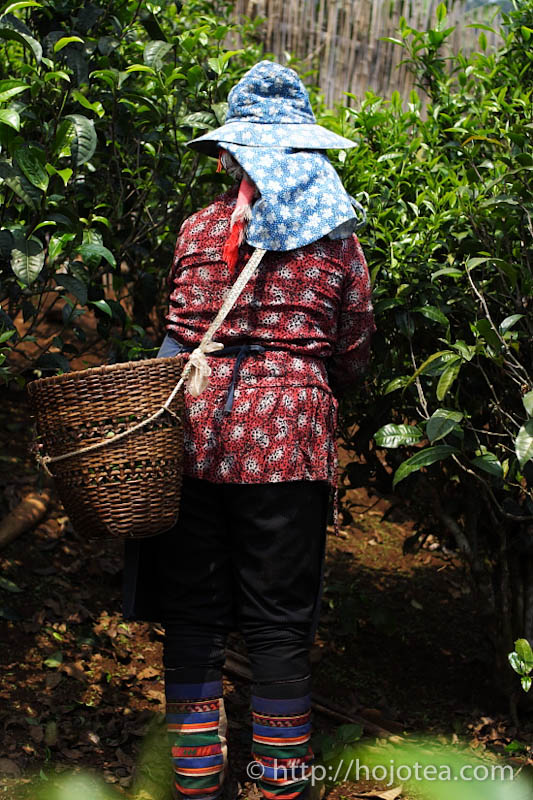 |
 |
 |
 |
 |
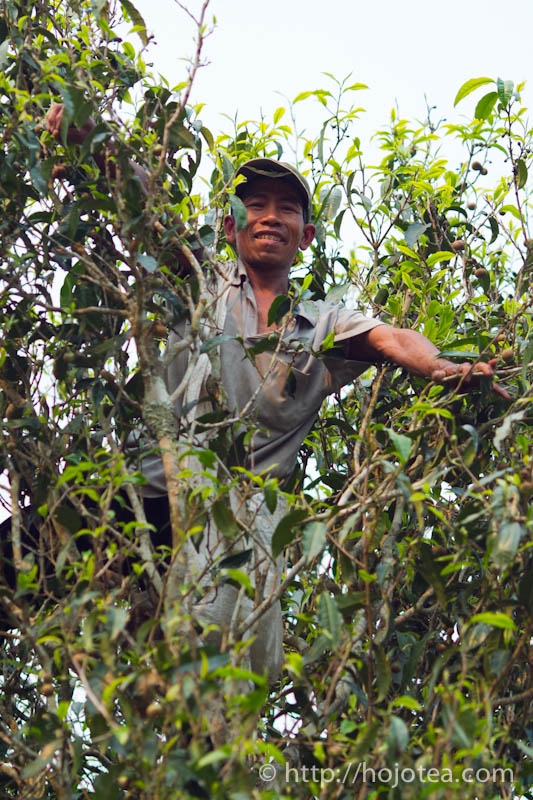 |
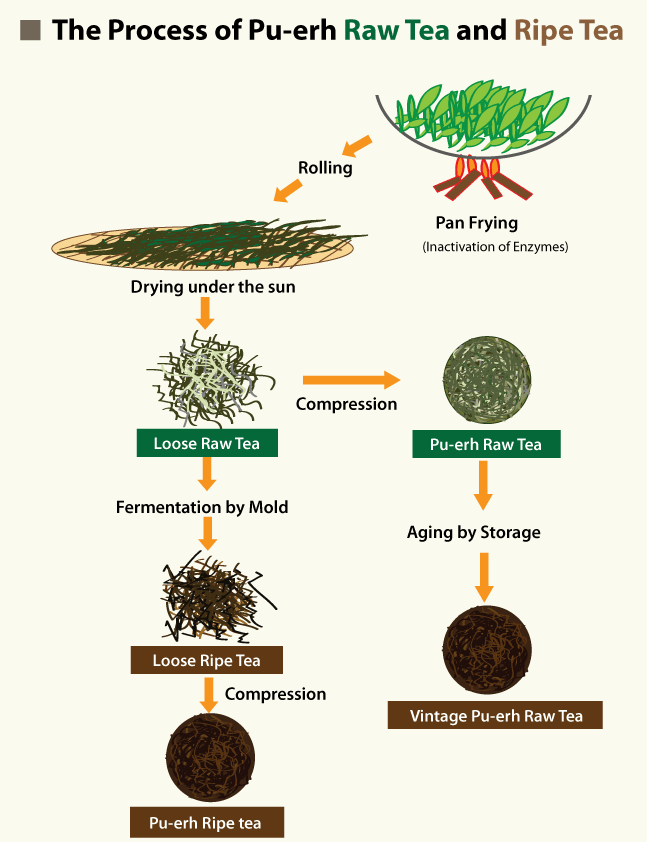
Go to further information about suitable water for brewing tea >>
Go to further information about suitable water for brewing tea >>
For brewing Mi, it is recommended to use a red clay or Shigaraki clay tea pot. It is important to pour boiling water into the teapot and leave it for about 10 seconds. Without this rinsing process, the temperature of boiling water decrease about 20 degree C when it is pour into the teapot.
Place tea leaves in teapot and pour boiling water again. Leave it for less than a second and discard the water, and immediately pour boiling water one more time and repeat the same procedure. Without this step, the temperature of tea will reduce nearly 30 degree C.
If (4) and (5) is not carried out, your brewing temperature will be 50-60 degree C. This is too low to extract sufficient flavor and taste. Please repeat rinsing process one more time. Please do not soak tea for more than a second.
You can brew up to even 8-10 brewing using the same tea leaves. From 2nd brewing onwards, it is very important to keep brewing time as short as you can. As tea leaf is wet and hot, definitely it is not necessary to brew more than a few seconds.
Note: Please remove the lid while you are waiting for subsequent brewing. If the lid is not removes, tea leaves will be over steamed and get oxidized.
Firstly, warm up the Gaiwan with boiling water, and then place tea leaves up to 60-70% of the capacity of Gaiwan. We use 1g of tea leaves for 10ml of water. So if the capacity of Gaiwan is 100ml, we need about 5g of tea leaves. Please remember to place tea leaves gently and not to compress it into the Gaiwan. Pour boiling water up to the level of tea leaves, and then place the lid and immediately pour out the water from Gaiwan. Repeat this action once more. It means you need to rinse the tea leaves twice with boiling water. This action is to warm up tea leaves and also to open up the leaves. These actions must be carried out swiftly so as not to lose the precious flavor and taste of tea.
For the actual brewing, it does not require long infusion like making other teas. Instead, you have to brew it the "touch and go" style. As soon as you pour the boiling water up to the level of tea leaves, place the lid to Gaiwan and then immediately pour out the tea without letting it soak. It is recommended to accumulate the 1st and 2nd brewing into a pitcher in order to even out the flavor and taste. For each subsequent brewing, you just need to brew less than a second. By brewing this "touch and go" style, you can continue brew up to nearly 20 times.
Note: Please remove the lid while you are waiting for subsequent brewing. Tea leaf will be over steamed and get oxidized if the lid is not removed.
Pu-erh tea can lasts more than 10 - 20 years as long as tea is kept in dry environment. Before tea is kept, it must be tightly sealed. Tea should be kept in ambient temperature and dry conditions such as in the living room and it must not be kept in humid environment like in the kitchen. Avoid enclosed area such as inside the cupboard or drawer as these places are damp. Also avoid opening the bag of tea in humid atmosphere. It is recommended to open the bag during a sunny day or under air-conditioned atmosphere. Once tea leaves absorb moisture, deterioration of tea will be triggered within a few days. Tea will give an astringent taste, and sometime it tastes sour. Its aroma also becomes weaker.
Traditionally, Pu-erh tea is compressed to remove oxygen from the leaves and kept it intact. It was the wisdom of ancient people to keep tea without oxygen and let it matured very well.
From scientific point of view, oxidation does not only refer to receiving oxygen. The oxidation also takes place when it releases hydrogen and receives electron. Even if tea is kept without oxygen, it will still undergo oxidation.
In 1960's, generally Pu-erh tea was compressed tightly and shaped like a bing (flat and thin round cake). It was called “iron bing”. The tea leaf was compressed extremely tight until it became like a piece of stone; we can hardly pry it even if we use the proper tool that designed for prying the Pu-erh cake. This style of compression succeeded the elimination of oxygen from the tea leaves. If you have ever tried this kind of Pu-erh iron bing, you would know that it was very well-matured. It gives flavour like honey with fruity note and gives no earthy flavour at all. The only problem is that it is so difficult to loosen the leaves from the iron bing and the leaves are often damaged during the process.
On the other hand, nowadays most of Pu-erh cakes are loosely compressed. Some of the Pu-erh cakes can be easily break apart by fingers. Obviously there is oxygen remained in between the leaves. If we keep loosely-compressed Pu-erh in ambient environment, tea will expose to not only oxygen but also moisture and develop unwanted oxidation that usually generates earthy flavour. To achieve the same maturation effect like the iron bing, we encourage customer to keep Pu-erh tea without oxygen. With modern technology, we are able to apply the same theory. Some people in Taiwan intentionally keep high mountain oolong in the vacuum bag for a few years. In the beginning, high mountain oolong is green in colour and it gives a delightful fresh flowery flavour. After a few years of maturation, the leaves turn into yellow colour and it gives the flavour like ripen peach or apricot. This is exactly the same effect as what we are looking for in Pu-erh tea. Based on our experience, well-matured Pu-erh tea gives a very fruity flavour and no earthy or mouldy flavour at all.

Please feel free to send us e-mail for enquiry at:

 |
We accept various kinds of credit card through Paypal.
Only if customer prefer other option of payment, we suggest "Bank Transfer".
Various choice of shipping method
EMS, SAL, Small Packet, Small Packet (SAL) Yamato Express and Surface
For shipping tea, we usually suggest small air parcel, the estimated shipping cost of tea in 100g (with wrapping material ) is
Small Parcel
USA JPY 600, EU JPY600 and Asia JPY470
Small Packet (SAL)
USA JPY380, EU JPY380 and Asia JPY320
The shipping fee to oversea by small air parcel happens to be even cheaper than domestic shipping fee in Japan.
For your information, some countries, EU in particular imposes custom duty. We need buyer to bare the duty. We are sorry, but we cannot change the amount on the invoice, and we do not mark any packages as gifts. We will strictly follow the custom regulation.
A GIFT FROM THE MOUNTAIN
since 2006
Copyright (C) 2006-2007 HOJO co.,ltd. All Rights Reserved.